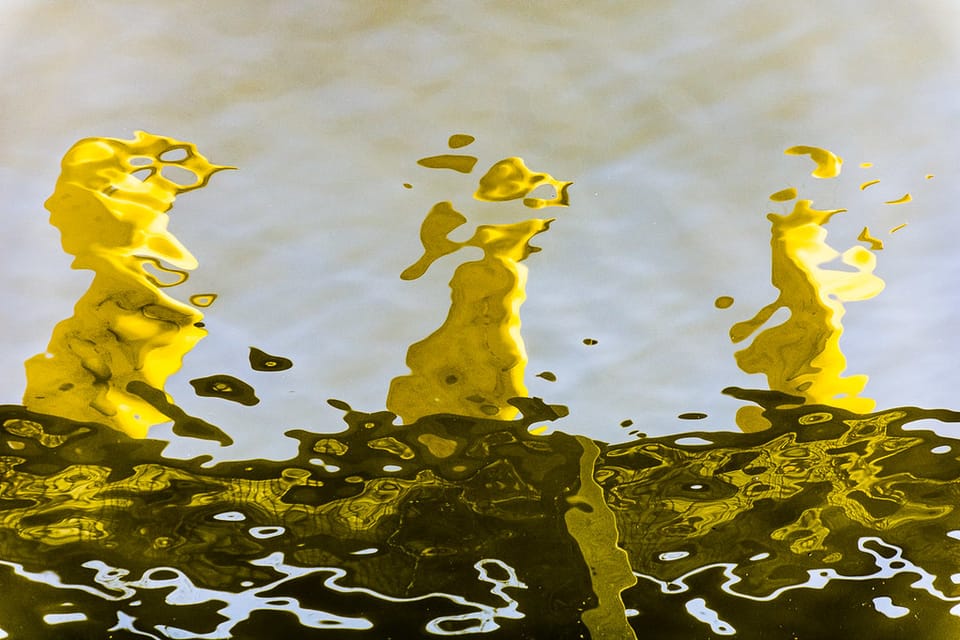Weird & Wonderful Creatures of Western Canada

The natural world is full of amazing creatures. Here are just a few you may not be familiar with.
British Columbia
Sand Lance – Sometimes called sand eels, these small creatures (less than 11 in/30 cm) have pointed snouts and long, slender, metallic bodies. Their eyes can rotate independently of one another. Sand lance are bottom dwellers and have never developed a swim bladder that would help them float. They’re hard to spot as they burrow under the sand when they’re not feeding and hibernate without eating during the winter. They spawn on beaches, often providing juvenile salmon with their first meal, and are a primary food source for over 100 creatures.
Creature Feature: Pacific Sand Lance [Island Fisherman Magazine]
What Do Humpback Whales Eat? Part 2: Sand Lance [Conscious Breath Adventures]
Oregon forestsnail – If you get down on your hands and knees and poke around under stinging nettles (plants covered in acid-filled hairs) and big-leaf maples, you may be lucky enough to spot the elusive Oregon forestsnail. One of the largest land snails of the Pacific Northwest (1-1.5 in/28-35 mm), it has a white band around its opening and a deep central pit on the underside of its shell. The snails take 2 years to mature and can live for 5-8 years. They may be slow-moving, but they help to disperse seeds, lichens, and fungi. They also aid in decomposition.
Restoration at a Snail’s Pace [The Nature Trust of BC]
At a Snail’s Pace [Nature Notes, E-Fauna BC]
Oregon Forestsnail [COSEWIC]
Alberta
Ghost Magpie – Who knew that Edmonton was the Ghost Magpie Capital of Canada (or maybe the world?)? Lacking the normal amount of black pigmentation, Ghost Magpie are white-grey with blue eyes. They’re highly unusual, except in Edmonton, where there are more than anywhere else.
‘Ghost Magpies” Add Intrigue to Edmonton’s Urban Wildlife [Edmonton Journal]
Northern Bog Lemming – You may think of lemmings as living in the Arctic, but the northern bog lemming can also be found in wet northern forests, bogs, tundra, and meadows, such as Edmonton’s river valley. The lemmings have brownish-grey fur and a stumpy tail and are related to gerbils and hamsters. They’re 4 in/10 cm long and eat grasses, mushrooms, berries, and sometimes insects. They are active all year round, both day and night. They make runways through the ground cover and dig burrows, tunnelling under the snow in winter. The lemmings are often found in small colonies.
Northern Bog Lemming [Wikipedia]
Northern Bog Lemming [Wilderness Classroom]
Saskatchewan
Neotenic Salamander – Tiger salamander are an elusive species, often emerging for only brief periods during rainy weather. They lay their eggs on submerged vegetation in ponds or wetlands where the eggs hatch into aquatic larvae. By late spring, most of them have metamorphosed into terrestrial juveniles.
Neotenic salamanders, however, become sexually mature, but they don’t fully develop, retaining their larval appearance (feathery external gills and dorsal and ventral tail fins), and remaining in an aquatic environment for their whole lives. Neotenic salamanders are more common in alkaline waterbodies with a plentiful food supply but without predatory fish. They are also more common when conditions on land are less favourable (e.g. very dry, lack of cover).
Has the tiger salamander found the fountain of youth? [Alberta Volunteer Amphibian Monitoring Program]
Manitoba
Water Shrew – The water shrew is the world’s smallest mammalian diver at 6 in/15 cm in length (and almost half of that is their tail) and weighing about the same as 2 ½ teaspoons of salt. They are found along streams or at the edge of lakes or ponds right across Canada’s boreal region. Unlike other divers, they raise their body temperature before diving into cold water, through shivering or by using stored brown fat to create heat. They follow scent trails underwater by exhaling air around an object and then re-inhaling the air bubble to “smell” it.
The Weird & Wonderful Water Shrew [Nature Manitoba]
Photo credit: https://www.flickr.com/photos/apmckinlay/29849948202
EcoFriendly West informs and encourages initiatives that support Western Canada’s natural environment through its online publication and the Nature Companion website/app. Like us on Facebook, follow us on Twitter, or subscribe by email.

Member discussion